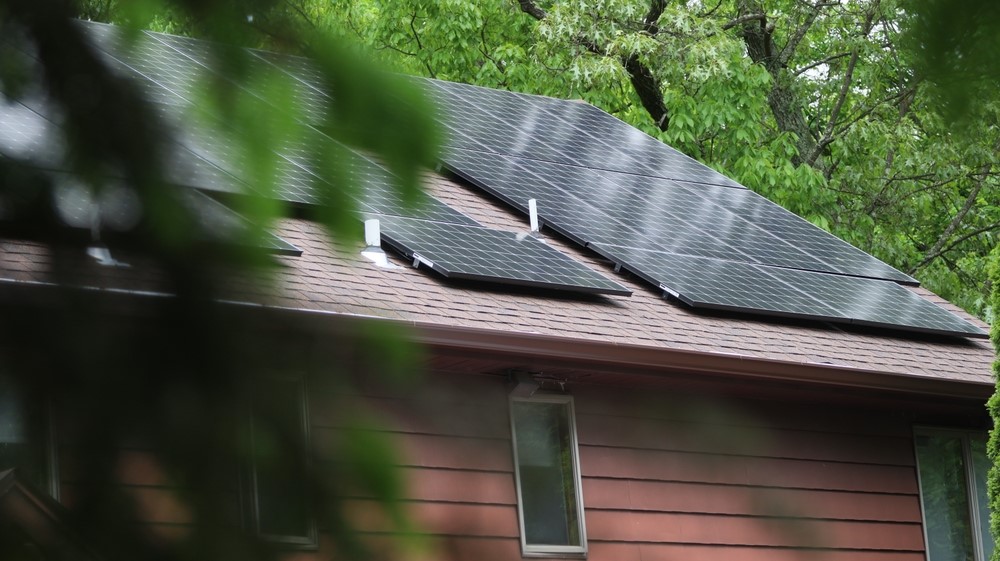Roof Repair Basics: What Every Homeowner Should Know
As a homeowner in Pennsauken Township, understanding the essentials of roof repair can save you from headaches and hefty costs down the line. Weather and time wear down your home's first line of defense, and catching issues early is key. Knowing what to look for and how to address it not only protects your home but also empowers you to maintain its integrity. Keep reading to learn how to identify common roof problems, the must-have tools for repairs, and steps for a thorough roof inspection—knowledge that could very well prolong the life of your roof and ensure the safety of your home.
Identifying Common Roof Issues
As I routinely inspect my home, I pay special attention to the roof, fully aware that it bears the brunt of nature's temper. Spotting signs of water damage early can save me as a homeowner from costly repairs, while recognizing missing or damaged shingles acts as a crucial line of defense in preserving the integrity of my roof. I find it important to grasp the subtleties of such issues; a discolored ceiling or a shingle fragment in my backyard may be early indicators of larger concerns that require immediate action.
Spotting Signs of Water Damage
I always keep an eye out for the subtle yet telltale signs of water damage on my roof such as water stains on the ceiling or walls, and peeling paint or wallpaper. If I notice any of these symptoms, I understand it could be time for a thorough check to prevent further deterioration that might lead to significant structural damage.
Another indicator that water may be compromising my home's defenses is the presence of mold or mildew in areas like the attic. Persistent moisture in these spots often points to a leak, and I'm well aware that dealing with such an issue promptly can avert potential health risks and protect the longevity of my home.
Recognizing Missing or Damaged Shingles
Detecting anomalies on my roof's surface, I know that shingles in disarray often hint at underlying issues that require attention. When I observe shingles that are cracked, buckling, or entirely absent, it's clear to me that these defects can lead to water infiltration and even more complex damage if not addressed promptly.
During my regular roof evaluations, I'm vigilant for shingles that have lost their granules, as these granules play a critical role in protecting the roof from UV rays. A shingle stripped of its granules is not only more vulnerable to the elements but also a sign that my roof may be nearing the end of its operational life.
Essential Tools for DIY Roof Repair
Embarking on DIY roof repair, I recognize that having the proper tools and understanding their use is non-negotiable. Prioritizing safety and effectiveness, I select high-quality sealants and caulks designed for roofing, ensuring my repairs endure through harsh weather. Additionally, I invest in a sturdy ladder and the requisite safety gear, mindful that a stable ascent and protective equipment are fundamental to both my security and the success of my rooftop endeavors.
Selecting the Right Sealants and Caulks
When I tackle roof repairs, choosing the right sealants and caulks is critical. I seek products specifically formulated for roofing applications, capable of delivering a watertight seal that can withstand the extremes of weather and temperature fluctuations my roof is subjected to.
Committing to a durable and flexible repair material is paramount, so I opt for elastomeric or rubberized sealants, as they adhere well and offer the expansion and contraction needed to maintain an enduring seal. A commitment to quality in this area is an investment in my home's future resilience.
The Importance of a Sturdy Ladder and Safety Gear
My awareness of the significant height involved in roof repair keeps me conscientious about the ladder I choose: it must be stable and the right size for my needs. I acknowledge that my safety is paramount and select a ladder that provides a secure base, mitigating the risk of a dangerous fall while ensuring I can reach the work area comfortably.
I never underestimate the value of proper safety gear; a harness, gloves, and eye protection are essential. Before I step onto the ladder, I make sure I'm equipped to prevent slips and shield my hands and eyes from debris because I know that a momentary lapse in safety can have long-lasting consequences.
Steps to Conduct a Basic Roof Inspection
Initiating a basic roof inspection, I focus on two essential areas that are often the harbingers of potential issues: the attic and the roof's external elements such as flashings, vents, and chimneys. I start my inspection by venturing into the attic, armed with a flashlight, to look for any signs of leaks or moisture that might indicate penetration or condensation issues. After carefully analyzing the interior, I proceed to the external survey, scrutinizing flashings, vents, and chimneys for any signs of damage or wear that could compromise the roof's integrity. My thorough approach ensures that minor issues can be caught and addressed before they escalate into major concerns.
Checking the Attic for Leaks or Moisture
Upon entering the attic, I immediately search for any signs of water stains on the underside of the roof decking or around the rafters, as these marks can be clear indicators of leaks. The presence of rust on nails or any wet insulation also spells trouble, suggesting water intrusion that could lead to more extensive damage if left unchecked.
I take a moment to examine the attic during or immediately after a heavy rain, since this is when leaks will be most visible. A careful look at the attic floor for puddles or damp spots can reveal subtle leakages that might not be apparent during dry conditions, giving me the advantage of early detection.
Examining Flashings, Vents, and Chimneys
On the roof, my focus narrows to the metal strips known as flashings that seal the perimeters and valleys, critical zones where materials meet. A detailed examination of these can reveal any lifting or separation that might invite water intrusion.
I pay equal attention to the vents and chimney, ensuring their seals remain intact. Cracked or crumbling sealant around these structures could allow water to enter, underlining the importance of regular, careful scrutiny.
Preventive Measures to Extend Your Roof's Life
To preserve the durability and functionality of my roof, I consistently implement preventive strategies to mitigate the need for extensive repairs. One of the simplest yet highly effective measures I take includes the routine clearing of gutters and downspouts, ensuring they are free of debris that could cause water to back up and damage my roof. Additionally, I proactively trim any tree branches that loom over my house to reduce the accumulation of leaves and avoid potential damage from falling limbs, thereby protecting my roof’s structural integrity.
Regular Cleaning of Gutters and Downspouts
My approach to preventing water damage involves diligently maintaining my gutters and downspouts, as they are integral to proper roof care. Keeping them clear of leaves and debris ensures that they function effectively, directing water away from my roof and foundation to prevent water buildup and potential damage.
I make a habit of inspecting and cleaning my gutters at least twice a year, particularly after heavy storms or seasonal leaf fall. This proactive maintenance is a cornerstone of safeguarding my home, ensuring water flows freely and doesn't invite costly complications down the line.
Trimming Overhanging Tree Branches Near Your Roof
I make it a routine to regularly survey the trees surrounding my home, identifying branches that hang precariously over my roof. It’s an essential task; removing these branches not only prevents debris from clogging my gutters but also reduces the risk of damage during storms.
I understand that branches left to grow unchecked pose a threat not just to my roof's shingles but also to the overall structure in the event of heavy wind or a storm. That’s why I’m proactive in cutting back any limbs that extend towards my home, ensuring they are a safe distance away to maintain the integrity of my roof.
Conclusion
Understanding the basics of roof repair is imperative for any homeowner to prevent minor issues from escalating into major damage. Spotting signs such as water damage, mold, and damaged shingles enables early interventions that protect the home's structure and integrity. Equipping oneself with the proper tools and safety gear ensures that repairs are conducted safely and effectively. Regular maintenance, such as cleaning gutters and trimming tree branches, is essential in extending the life of one's roof and safeguarding against potential future problems.
Subscribe to Warner Exteriors & Solar's Blog







Comments